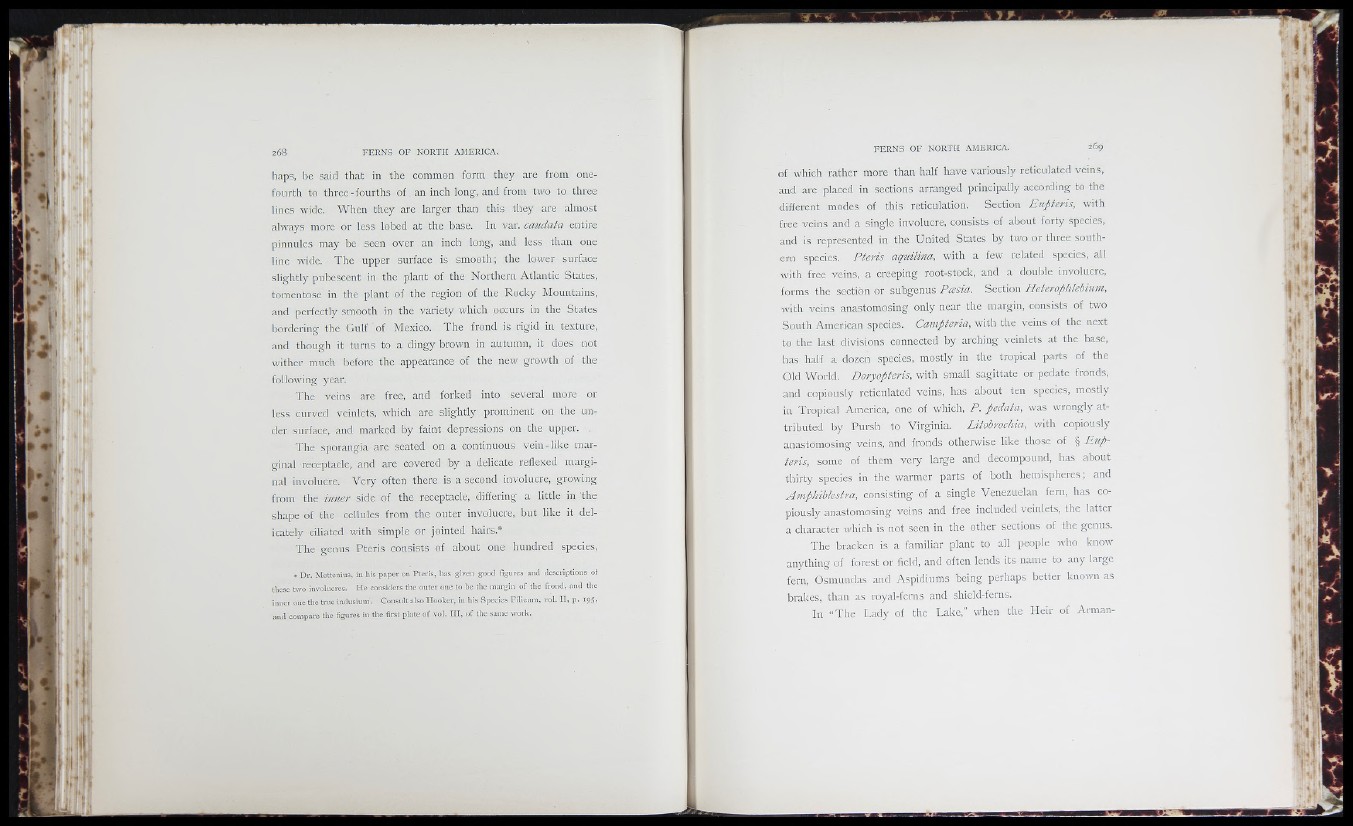
I
I
!>
IK
I * « I I»
I». i:
« •
I» «•
» • <
B - | > VI
J '
l l
m
! '
I ^
It- f
haps, be said that in the common form they are from one-
fourth to three-fourths of an inch long, and from trvo to three
lines wide. When they are larger than this they are almost
always more or less lobed at the base. In var. caudata entire
pinnules may be seen over an inch long, and less than one
line wide. The upper surface is smooth; the lower surface
slightly pubescent in the plant of the Northern Atlantic States,
tomentose in the plant of the region of the Rocky Mountains,
and perfectly smooth in the variety which occurs in the States
bordering the Gulf of Mexico. The frond is rigid in texture,
and though it turns to a dingy brown in autumn, it does not
wither much before the appearance of the new growth of the
following year.
The veins are free, and forked into several more or
less curved veinlets, which are slightly prominent on the under
surface, and marked by faint depressions on the upper. ,
The sporangia are seated on a continuous vein-like marginal
receptacle, and are covered by a delicate reflexed marginal
involucre. Very often there is a second involucre, growing
from the inner side of the receptacle, differing a little in the
shape of the cellules from the outer involucre, but like it delicately
ciliated with simple or jointed hairs.*
The genus Pteris consists of about one hundred species,
• Dr. Mettenius, in his p ap e r on Pte ris, has given good figures and descriptions ol
these two involucres. H e considers the o u te r one to be the margin o f the frond, and the
inner one the true indusium. C onsult also P looker, in his Species F ilicum , vol. H , p. 19S,
a n d compare the figures in the first p la te o f vol. I l l , o f the same work.
of which rather more than half have variously reticulated veins,
and are placed in sections arranged principally according to the
different modes of this reticulation. Section Eupteris, with
free veins and a single involucre, consists of about forty species,
and is represented in the United States by two or three southern
species. Pteris aquilina, with a few related species, all
with free veins, a creeping root-stock, and a double involucre,
forms the section or subgenus Paisia. Section Pleterophlebium,
with veins anastomosing only near the margin, consists of two
South American species. Campteria, with the veins of the next
to the last divisions connected by arching veinlets at the base,
has half a dozen species, mostly in the tropical parts of the
Old World. Doryopteris, with small sagittate or pedate fronds,
and copiously reticulated veins, has about ten species, mostly
in Tropical America, one of which, P. pedata, was wrongly attributed
by Pursh to Virginia. Litobrochia, with copiously
anastomosing veins, and fronds otherwise like those of § E u p teris,
some of them very large and decompound, has about
thirty species in the warmer parts of both hemispheres; and
Amphihlestra, consisting of a single Venezuelan fern, has copiously
anastomosing veins and free included veinlets, the latter
a character which is not seen in the other sections of the genus.
The bracken is a familiar plant to all people who know
anything of forest or field, and often lends its name to any large
fern, Osmundas and Aspiditims being perhaps better known as
brakes, than as royal-ferns and shield-fcrns.
In “ The Lady of the Lake,” when the Heir of Arman-
\
, r
4-
u
4 ■